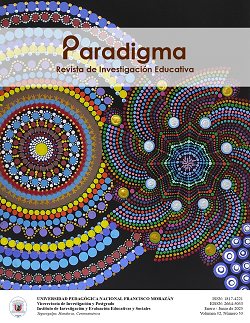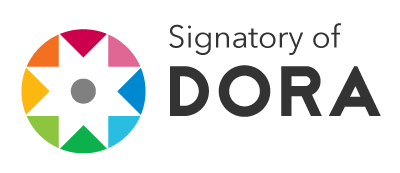Virtual reality as a teaching and learning tool for three-dimensional geometry
Keywords:
3D geometry, virtual reality, didactic innovation, math educationAbstract
This article presents and analyzes the results of an instructional proposal implemented with Virtual Reality (VR) to address the difficulties in the teaching and learning of orthogonal projections in three-dimensional geometry. Through a qualitative interpretative analysis, the responses of four secondary school students (16-17 years old), participating in a 3D Geometry course, were evaluated using the Instrumental Approach and the Theory of Semiotic Representation Registers as analytical frameworks. After three sessions, a substantial positive change was observed in the students' responses, which highlights the potential of VR to improve the performance of orthogonal projections. A relevant finding was the observation that the student with the least active interaction with VR showed the least degree of improvement in their responses, underscoring the importance of engagement with technology.
References
Ali, F., Omar, M., Ibrahim, N., Surif, J., Ali, M. e Ismail, S. (2017). Overcoming the problems faced by student's in learning engineering drawing with the implementation of augmented reality learning environment. Man in India, 97(17), 147-159.
Artigue, M. (2011). Tecnología y enseñanza de las matemáticas: desarrollo y aportaciones de la aproximación instrumental. Cuadernos de Investigación y Formación en Educación Matemática, 6(8), 13-33. https://revistas.ucr.ac.cr/index.php/cifem/article/view/6948
Bloom, B., Englehart, M. Furst, E., Hill, W. y Krathwohl, D. (1956). Taxonomy of educational objectives: The classification of educational goals. Handbook I: Cognitive domain. Longmans.
Buentello Montoya, D., Lomelí Plascencia, M. y Medina Herrera, L. (2021). The role of reality enhancing technologies in teaching and learning of mathematics. Computers & Electrical Engineering, 94(1), 107287. https://doi.org/10.1016/j.compeleceng.2021.107287
Chevallard, Y. (1999). El análisis de las prácticas docentes en la teoría antropológica de lo didáctico. Recherches en Didactique des Mathématiques, 19(2), 221-266.
Duval, R. (1993). Registros de Representación Semiótica y Funcionamiento Cognitivo del Pensamiento. Annales de Didactique et de Sciencies Cognitives, 5, 37-65.
Duval, R. (1998). Registros de Representación Semiótica y Funcionamiento Cognitivo del Pensamiento. En F. Hitt (Ed.), Investigaciones en Matemática Educativa II, (pp.173-201). Grupo Editorial Iberoamericana.
Duval, R. (1999a). Representation, vision and visualization: Cognitive Functions in Mathematical Thinking. Basic Issues for Learning.
Duval, R. (1999b). Semiosis y pensamiento humano: : registros semióticos y aprendizajes intelectuales. Universidad del Valle.
Flores, F., Vásquez, C. y González, F. (2021). El uso de las TIC en la enseñanza de conceptos geométricos en la educación básica. RIDE. Revista Iberoamericana para la Investigación y el Desarrollo Educativo, 12(3). https://doi.org/10.23913/ride.v12i23.1024
Fujita, T., Kondo, Y., Kumakura, H. y Kunimune, S. (2017). Students’ geometric thinking with cube representations: Assessment framework and empirical evidence. The journal of mathematical behavior, 46, 96-111. https://doi.org/10.1016/j.jmathb.2017.03.003
Fujita, T., Kondo, Y., Kumakuram H., Kunimune, S. y Jones, K. (2020). Spatial reasoning skills about 2D representations of 3D geometrical shapes in grades 4 to 9. Mathematics Education Research Journal, 32, 235-255. https://doi.org/10.1007/s13394-020-00335-w
Gittinger, M. y Wiesche, D. (2023). Systematic review of spatial abilities and virtual reality: The role of interaction. Journal of Engineering Education, 113(4), 919–938. https://doi.org/10.1002/jee.20568
Mavromatis, M., Gaugne, R., Coulon, R. y Gouranton, V. (2025). A Whole New World: Can Virtual Reality Help to Understand Non-Euclidean Geometries? GRAPP 2025 - 20th International Conference on Computer Graphics Theory and Applications, VISIGRAPP Porto, Portugal.
Moral Sánchez, S., Sánchez Compaña, M. y Romero Albaladejo, I. (2023). Uso de realidad virtual en geometría para el desarrollo de habilidades espaciales. Enseñanza de las Ciencias, 41(1), 125-147. https://doi.org/10.5565/rev/ensciencias.5442
Rabardel, P. (1995). Les Hommes et les technologies; approche cognitive des instruments contemporains. Armand Colin.
Radianti, J., Majchrzak, T. A., Fromm, J. y Wohlgenannt, I. (2020). A systematic review of immersive virtual reality applications for higher education: Design elements, 1 lessons learned, and research agenda. Computers & Education, 147, 103778. https://doi.org/10.1016/j.compedu.2019.103778
Ramírez, B., González, M. y Zambrano, R. (2023). Errores que cometen los estudiantes de tercero y cuarto año de enseñanza media en vistas ortogonales de figuras geométricas 3D. Revista Chilena De Educación Matemática, 15(2), 46–62. https://doi.org/10.46219/rechiem.v15i2.125
Robinson, K. y Aronica, L. (2015). Escuelas creativas: La revolución que está transformando la Educación. Grijalbo.
Rodríguez Cano, S. y Delgado Benito, V. (2022). Educación, Tecnologías Digitales e Investigación: proyecto de realidad aumentada y virtual FORDYSVAR. Video Journal of Social and Human Research, 1(2), 57-69. https://doi.org/10.18817/vjshr.v1i2.26
Saralar, I., Ainsworth, S. y Wake, G. (2018). Middle school students’ errors in two-dimensional representations of three-dimensional shapes. Research in Mathematics Education, 20(2), 1-3. https://doi.org/10.1080/14794802.2018.1482475
Slavova, Y. y Mu, M. (2018). A Comparative Study of the Learning Outcomes and Experience of VR in Education. 25th IEEE Conference on Virtual Reality and 3D User Interfaces RV 2018 - Proceedings, 685–686. https://doi.org/10.1109/VR.2018.8446486
Sohail, M., Habib, U. y Rasool, S. (2025). VR Stereo Thrills & Spills: An Immersive Virtual Reality Game for Enhancing Student Understanding of Stereoisomerism. Journal of Chemical Education, 102(5). https://doi.org/10.1021/acs.jchemed.5c00112
Soto Ramos, M. (2024). 3DGeoMuseum: Solid geometry through Virtual Reality. International Conference on Virtual Learning, 19(1), 179-192. https://doi.org/10.58503/icvl-v19y202415
Stelios, S., Tzavaras, P. y Dermata, M. (2022). Virtual Reality in education: Attempting an epistemic justification. European Journal of Teaching and Education, 5(1), 55–62. https://doi.org/10.33422/ejte.v5i1.933
Su, Y., Cheng, H. y Lai, C. (2022). Study of Virtual Reality Immersive Technology Enhanced Mathematics Geometry Learning. Frontiers in Psychology, 13, 760418. https://doi.org/10.3389/fpsyg.2022.760418
Walkington, C., Sherard, M., Daughrity, L., Pande, P., Beauchamp, T. y Cuevas, A. (2025). The affordances and constraints of mathematics tutoring in immersive, collaborative, and dynamic virtual reality environments. Virtual Reality, 29(60), 1-23. https://doi.org/10.1007/s10055-025-01122-3
Wang, L., Zhang, Q. y Sun, D. (2024). Exploring the Impact of An Augmented Reality-Integrated Mathematics Curriculum on Students’ Spatial Skills in Elementary School. International Journal of Science and Mathematics Education, 23, 387–414. https://doi.org/10.1007/s10763-024-10473-3
Yarin, Y. y Gamarra, H. (2023). La realidad virtual y su efecto en la habilidad espacial: un caso de estudio enfocado en la enseñanza de la geometría descriptiva. Revista de Educación a Distancia (RED), 23(73). https://doi.org/10.6018/red.540091
Published
How to Cite
Issue
Section
License
Copyright (c) 2025 Paradigma: Revista de Investigación Educativa

This work is licensed under a Creative Commons Attribution-NonCommercial-NoDerivatives 4.0 International License.







